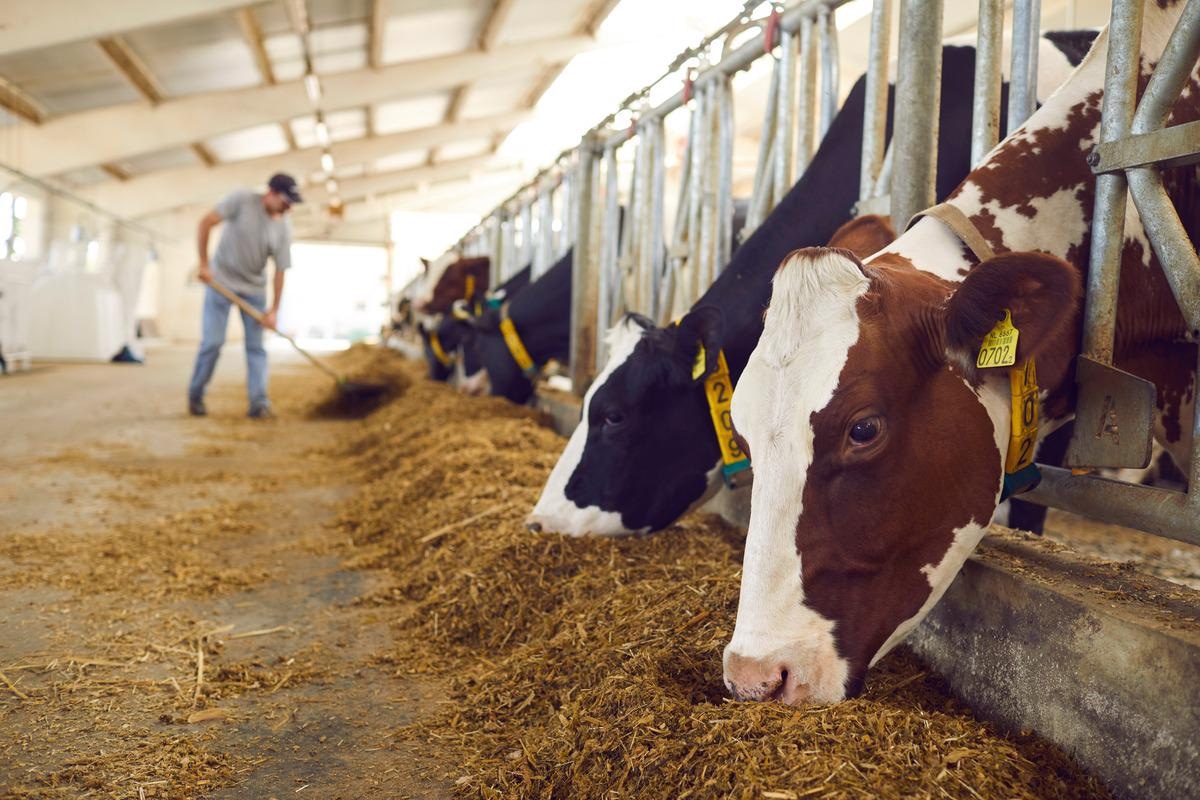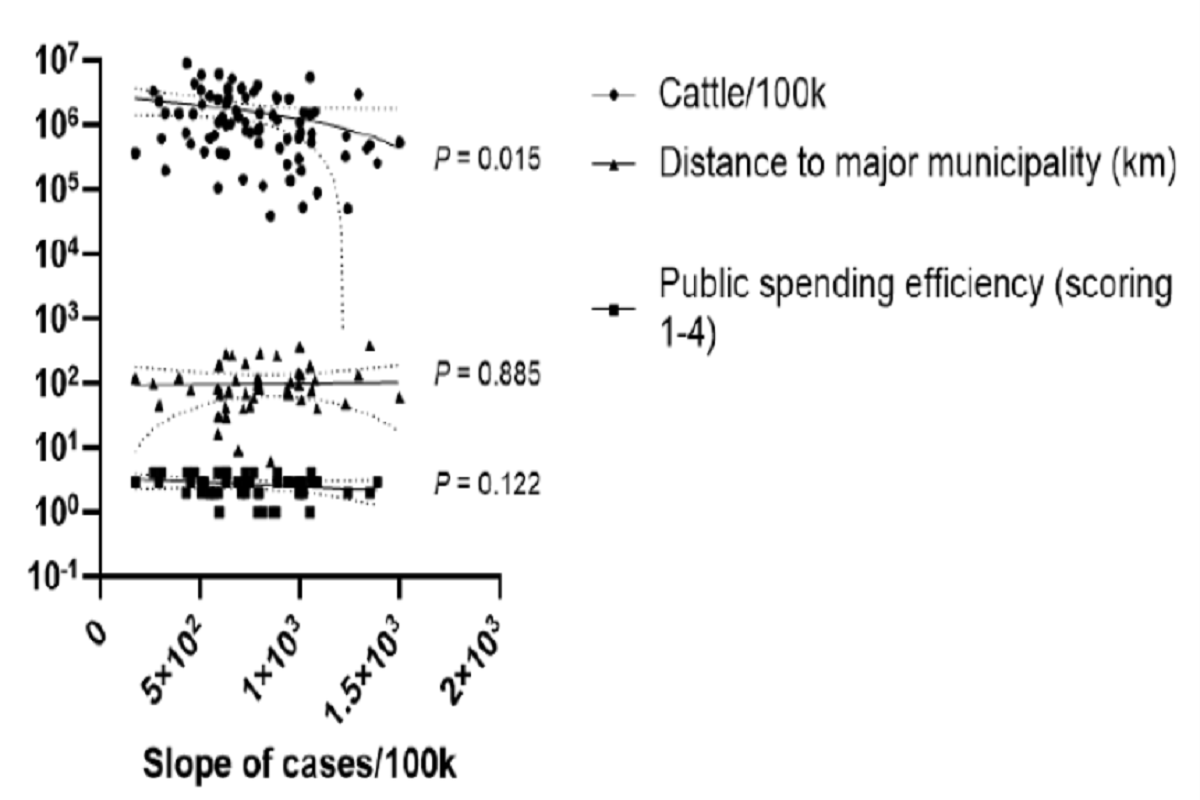The team also found that the cattle density per 100,000 people showed a negative correlation with the increase in coronavirus disease 19 (COVID-19) cases indicating a potential cross-protection mechanism against SARS-CoV-2 from previous exposure to BCoV.
 Study: Potential cross-protection against SARS-CoV-2 from previous exposure to bovine coronavirus. Image Credit: Studio Romantic/Shutterstock
Study: Potential cross-protection against SARS-CoV-2 from previous exposure to bovine coronavirus. Image Credit: Studio Romantic/Shutterstock
A pre-print version of the study has been published on the bioRxiv* server, while the article undergoes peer review.

 *Important notice: bioRxiv publishes preliminary scientific reports that are not peer-reviewed and, therefore, should not be regarded as conclusive, guide clinical practice/health-related behavior, or treated as established information.
*Important notice: bioRxiv publishes preliminary scientific reports that are not peer-reviewed and, therefore, should not be regarded as conclusive, guide clinical practice/health-related behavior, or treated as established information.
Background
A long history of cattle domestication has promoted the scenario of humans sharing infectious agents with cattle, for instance OC-43 CoV, a human common cold virus, is thought to have crossed over from cattle to humans in the past.
Coronaviruses are single-stranded RNA viruses belonging to the family Coronaviridae, which is further composed of four genera: Alphacoronavirus, Betacoronavirus, Gammacoronavirus and Deltacoronavirus. Betacoronaviruses include SARS-CoV-2 and the aforementioned bovine coronavirus (BCoV), the latter being responsible for diarrhea in newborn calves and respiratory infections in calves and cattle.
The team from Brazil hypothesizes that pre-existing immunity from contact with other coronaviruses, such as BCoV, may be able to induce an adaptive immunity that would help reduce the severity and propagation of SARS-CoV-2 infection. In a quest to find any possible evidence, the team designed the present study to search for peptides originating from BCoV proteins, that present antigen to T and B cells as well as exhibit high identity to their SARS-CoV-2 counterparts.
Study methods
The peptide sequences of membrane protein (M), nucleocapsid protein (N), spike protein (S), and replicase polyprotein (ORF1ab) belonging to BCoV were assessed for their T cell reactivity, by predicting their binding to human leukocyte antigen class II (HLA II) molecules, as well as B cell reactivity/binding.
All BCoV peptides that were above the cutoff thresholds for T cells and B cell binding were analyzed for their identity to the corresponding peptides of human SARS-CoV-2 using the multiple sequence alignment. Sequences with more than 80% identity were selected as peptide matches.
COVID-19 epidemiology was assessed as the slope of increase of cases per 100,000 people for each city in the Brazilian State of Mato Grosso do Sul (MS) between January 2020 and September 2021. The slope was compared to the number of cattle per100,000 people for each municipality in the MS state.
Distance from each municipality to the major city in the subregion of the state and general efficiency of public spending were used as controls and were compared to the slope of COVID-19 cases in a correlation analysis with COVID-19 prevalence.
Study findings
The team found a total of 136, 23, 45 and 709 15-mer peptides that overlapped by 10 amino acids for S, M, N and ORF1ab proteins respectively.
From the peptides that showed values above thresholds for T or B cell binding, only 2 peptides from protein S, 2 peptides from protein N, and 1 peptide from protein M showed at least 80% similarity with SARS-CoV-2 counterpart peptides. None of the peptides from these three proteins (S, N, M) was found to be above the threshold for T and B cells
However, when analyzing the ORF1ab protein, 107 peptides showed reactivity to either T or B cells above the threshold. From these, the reactivity of 28 peptides was found to be above the threshold for both T cells and B cells.
The team also found that cattle density per 100,000 people negatively correlated with the slope of COVID-19 case increase. The two parameters that were used as controls for the study, as expected, did not show any association with the slope of COVID-19 cases.
 Figure - Linear regression between cattle density and the slope of cumulative COVID-19 case increase in the Brazilian State of Mato Grosso do Sul. Data between Jan/20 and Sep/21 were used. Cattle density was calculated as the number of cattle/100,000 people in the municipality. The distance of the municipality to the major hub city was used to control for lower people connectivity of cattle-raising areas. Public spending efficiency was used to control for possible slower responses to the COVID-19 pandemic from cattle-raising municipalities. Analysis by run’s test in a linear regression. P-values are shown for each regression. The dotted lines around the linear regression trend indicate the 99% CI.
Figure - Linear regression between cattle density and the slope of cumulative COVID-19 case increase in the Brazilian State of Mato Grosso do Sul. Data between Jan/20 and Sep/21 were used. Cattle density was calculated as the number of cattle/100,000 people in the municipality. The distance of the municipality to the major hub city was used to control for lower people connectivity of cattle-raising areas. Public spending efficiency was used to control for possible slower responses to the COVID-19 pandemic from cattle-raising municipalities. Analysis by run’s test in a linear regression. P-values are shown for each regression. The dotted lines around the linear regression trend indicate the 99% CI.
Implications
The in silico work on BCoV epitopes reports several epitopes that could be recognized by human T and B lymphocytes and are shared with SARS-CoV-2. These epitopes may confer cross-reactivity and are potentially important for the mounting immune response against SARS-CoV-2.
The epidemiological data support the in silico analysis by showing a possible association of human exposure to cattle with the development of the pandemic.
It is possible that COVID-19 epidemiology was shaped by human exposure to BCoV, much as smallpox was naturally curtailed by the exposure to cowpox”, the team concludes.
The team finally proposes the use of BCoV as a vaccine candidate against COVID-19.

 *Important notice: bioRxiv publishes preliminary scientific reports that are not peer-reviewed and, therefore, should not be regarded as conclusive, guide clinical practice/health-related behavior, or treated as established information.
*Important notice: bioRxiv publishes preliminary scientific reports that are not peer-reviewed and, therefore, should not be regarded as conclusive, guide clinical practice/health-related behavior, or treated as established information.